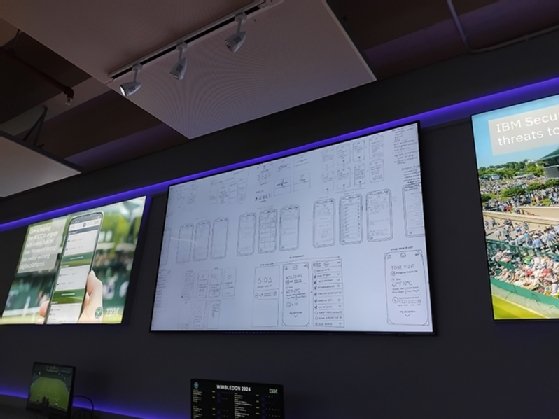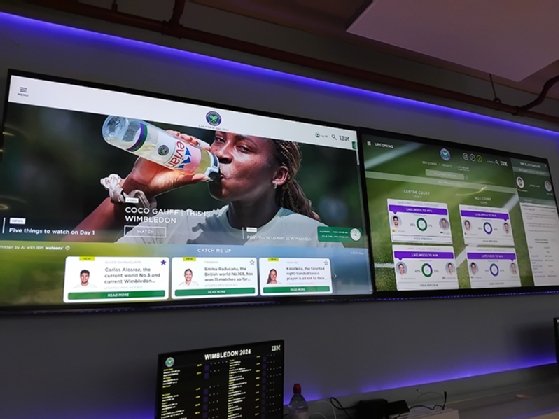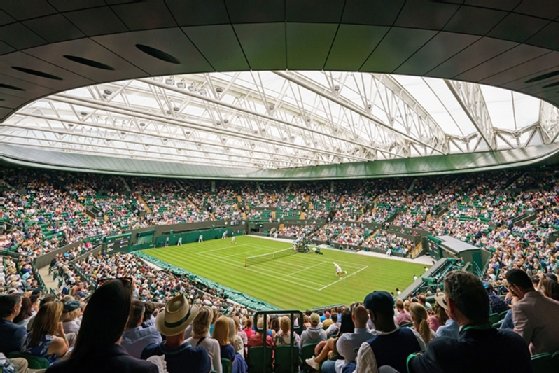
Tennis and technology: How Wimbledon gave fans a GenAI experience
Computer Weekly goes behind the scenes at Wimbledon to see how tennis fans are benefiting from the latest developments in artificial intelligence
For all its history and tradition, and the world-class players on court, watching tennis at Wimbledon is no longer just about watching tennis.
Following a trend seen in many sports, the organiser of the championships, the All England Lawn Tennis and Croquet Club (AELTC), is increasingly focused on fan engagement and user experience.
And like many organisations outside sport, technology is at the heart of enhancing that experience.
In 2023, Wimbledon reached 19 million fans through its digital platforms.
The AELTC has worked with IBM as its main technology partner for over 30 years, and for IBM it’s a showcase for its latest technologies, each year adding in something more – and for 2024, that means generative artificial intelligence (GenAI).
“We’re always looking to see how we can improve fan engagement through the use of AI and other IBM technologies,” says Bill Jinks, technology director at the AELTC.
“How do we bring the next level of data to the fan? How do we get Wimbledon front and centre, and use machine learning processes to bring things to the fore that people might not see instantly? That’s exactly the sort of innovation that excites us.”
Planning ahead
Planning for the tech behind each Wimbledon tournament starts in the spring of the preceding year, according to Kevin Farrar, head of sports partnerships for IBM UK.
IBM and AELTC teams go through an ideation process to mock up the capabilities of the Wimbledon app and website, taking into account the most recent tournament experience and the new technologies available.

After each year’s finals, the teams get together again in the autumn to review what worked and what didn’t in the most recent tech, and then commit to plans for the following championships.
The AELTC works with IBM all year round on its other technology needs, too, says Farrar, not least looking at sustainability and analysing data to assess and reduce the organisation’s carbon footprint.
But it’s the app and website that are the most public and highest-profile aspect of their partnership.
For this year, IBM built a large language model (LLM) trained on Wimbledon’s archive of tennis data from past tournaments, and using publicly available information from sports data companies such as Sportradar.
GenAI – it’s not only in tennis...
Tennis isn’t the only data-heavy sport turning to GenAI for greater insights. IBM also works with Spanish football club Sevilla, where data collected by the club’s global scouting network to assess the talents of young, up-and-coming players has been used to train an LLM to assist in player recruitment and transfers.
The system allows Sevilla coaches to use natural language queries to find the most likely players to fit their needs. For example, if the club wants a speedy left-footed winger who tracks back, defends and provides an above-average number of goal involvements – the GenAI system can quickly return all the potential prospects from the more-than 200,000 scouting reports that have been gathered.
Every year, IBM captures over 2.7 million data points during the Wimbledon fortnight. The company is responsible for all the courtside data gathering that feeds into broadcasters – all those statistics about number of aces, first serve percentages and unforced errors are recorded by experts sitting watching the matches in real time.
Farrar says IBM has trialled the use of computer vision technology to replace that manual input, but – so far – it’s not accurate enough, and can’t replicate the human element involved in judging whether, for example, a bad shot is a forced or an unforced error.
Training tradition
The tech company uses its Granite foundation model – part of its Watsonx platform of AI technologies – to build the Wimbledon LLM. The final model contained three billion parameters, trained in the unique specifics of Wimbledon tradition, such as referring to the “gentlemen’s draw” rather than the “men’s draw”.
The underlying infrastructure is a hybrid cloud based on Red Hat’s Openshift container platform running on both IBM Cloud and Amazon Web Services.

The GenAI capabilities were used this year to introduce new features and automatically generated content, such as “player cards” that provide information about every player in the tournament, match summaries, and AI-generated spoken commentary to accompany online highlights videos.
“Generative AI allows us to scale our ability to provide different types of content for fans wherever they are in the world in a way that’s personalised for them,” says Chris Clements, digital products lead at the AELTC.
Read more about tech in sport
- Atos jumps on ‘moving train’ for Euro 2024: Atos provides the IT supporting major recurring sporting events including Uefa’s European Football Championship.
- How William Hill’s IT copes with big sporting events: The Grand National is one of those events that pushes online betting sites beyond their limits. Understanding where there are bottlenecks is key.
- The need for speed: How AI is driving faster cars for VCARB Formula One team: We go behind the scenes with the Visa Cash App RB F1 team to find out how data, AI and ERP are helping to deliver the millisecond improvements in lap time that make all the difference in Grand Prix racing.
It’s not perfect – one of the GenAI features is a match predictor, for example. When Computer Weekly visited IBM’s operations centre at Wimbledon during this year’s championships, the AI had predicted a defeat for Britain’s unseeded Emma Raducanu against Greek ninth seed Maria Sakkari. As fans will know, Raducanu defeated Sakkari in straight sets.
But as Farrar says, that’s all part of the fun and the engagement for fans – generating debate and discussion through the app, to add to their enjoyment of visiting Wimbledon.

GenAI hasn’t completely replaced human content, though. A team of writers and data scientists work together to scour the data for unusual or high-value insights, such as personal milestones for players – perhaps someone about to serve their thousandth career ace, for example. Those sort of stats are often fed through to broadcast commentators to add colour to the match-viewing experience.
Once this year’s championships are over, the innovations discussed at the spring ideation meetings will be reviewed and prepared for 2025. Next year, Farrar says fans can expect to see more use of GenAI, through a multi-modal LLM incorporating audio and video content – although he acknowledges it’s not going to be good enough yet to allow the virtual return of Andy Murray after his final appearance at Wimbledon this year.










